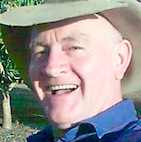About the Art
About the Art

In my readings on whom I call Australia's father of Surrealism (James Gleeson Link ) I find words of wisdom and paragraphs of truth and feeling for this outlandish form of my creative art that I am obsessed with.
Gleeson writes: -
“In the dream lies the illness and the need of the individual mind, and in the illness and the need of the individual mind lies the destiny of mankind upon the face of the earth.”
To get anywhere in this world we all must have big dreams, doing great art is my big Dream.
So I well continue with my dreams, coalesce myself even more at it, and see how long it takes me to transform my big dream into become part of my universe.
In one of Gleeson's books he writes that an eminent art historian David Sylvester wrote:“Surrealism is based on the belief in the superior reality of certain forms of association heretofore neglected, in the omnipotence of the dream and in the disinterested play of thought.”
Gleeson also once wrote:-
“At the heart of every great work of art lies an area of darkness that defies analysis. Theorists try, but something of the greatest works always elude the pursuer.
Surrealism is an art form that is intended to be interpreted. It is a literary art. It is the name given to those forms of creative art that are evolved not so much the conscious mind as from the deeper recesses of the subconscious mind. It is not whether you have understood exactly what the artist had in mind, but whether or not it has stirred your imagination into a creative act. You have reacted out of your own experience and hence the relationship between you and the painting becomes an intimate one. Because you have given the picture something of yourself, then the picture becomes part of you.”
Arr
Like the maker the observer becomes part of the art. Where can we define the line between beauty and ugliness in art?
Now I have said this of my art long ago, that my art is whatever one (the viewer) can make out of it, just the same as one (the individual) makes out of life.
“The unconscious mind is the creative factor and the source of power and of all knowledge, past and future.”
John Graham Born Ivan Dambrowsky.
It is as though my art is coming to me through the universe, just like it has for those like Gleeson and Dali, and Andre Breton who was to become the pope of Surrealism, although they employ the phrase (subconscious mind). Where is this subconscious mind in our (individual) reality?
I am not trying to equate myself with any of the great artists; yet, I am though, trying to show that there are comparisons in some way or another.
Just as my question above where can we define the line between beauty and ugliness in art?
Gleeson puts it befittingly in a few words, asked of him the question: -
Renee Free:-You said your idea of beauty and ugliness is similar to your moral belief that good and evil are constructions imposed on reality by man?
Gleeson: - “Yes, I think the two are connected in my view of the world. The line between the ugly and the beautiful is, like the equator, an imaginary line. In art, its position varies with the viewer. For me I doubt whether it exists at all. I doubt if it has any role to play in the search for the reality that lies beyond the apparent reality. We can say violence is ugly, yet it is a fact in human existence, a constant throughout Nature, and the cosmos. It is ugly to us when we see it as inimical. It is beautiful, and astonishing, when we see it as exploding star a million light-years from harming us.”
Here I must agree with Gleeson whole-heartedly, for it is up to the viewer to make up their own mind as to what it is they see, in anyone's art. What could be something of great beauty for someone might not be the same for others.
" Perhaps like most other artists I believe that the effort of describing or explaining a vision or work interferes with the creative process."
Salvador Dali once said "A true artist must be able, with the most unusual things to make the most usual works"


